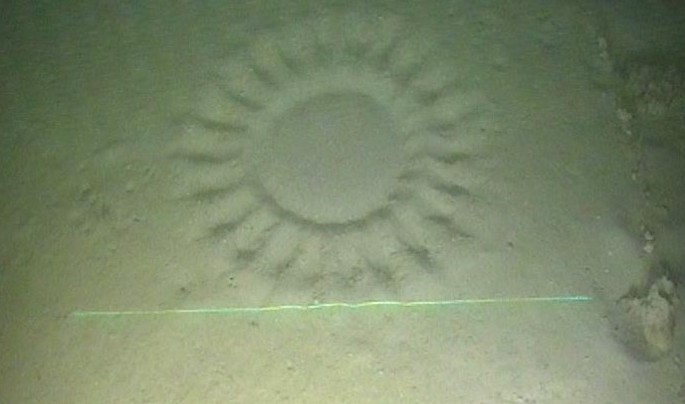Mystery circles providing evidence of a potential new species of pufferfish have been discovered in Australia’s north-west by researchers at The University of Western Australia and Australian Institute of Marine Science.
The research, published in the Journal of Fish Biology, placed the discovery at more than 5500km away from the only other similarly described structures off Amami-Oshima Island in southern Japan.
The discovery was made on the North West Shelf of Western Australia when 22 mystery circles were spotted on video footage collected by Fugro during an inspection of the Echo Yodel subsea infrastructure – operated by Woodside on behalf of the North West Shelf Project participants – and while surveying fish along the ancient coastline.
“Not only does this discovery spark intrigue and wonder among scientists and the general public, it also provides an insight into the reproductive behaviour and evolution of pufferfish globally.”
Todd Bond
The circles, which are the first to be found in Australia, were recognised by the researchers as the complex underwater structures created by the white-spotted pufferfish previously thought to be found only in southern Japan.
Most notably the size, number of ridges and presence of an intricate central circle with two outer rings makes them comparable to those found in Japanese waters.
Originally found at depths of less than 30m in Japan, the finding in the north-west extends their depth occurrence to 137m.

Sightings of pufferfish were captured in the immediate vicinity of the circles, near the subsea infrastructure, from Woodside footage using a remotely operated vehicle and an autonomous underwater vehicle, although further investigation was needed to classify the species.
"It’s great that operators of oil and gas infrastructure share their video imagery to build on our existing scientific knowledge."
Matthew Birt
Lead author Todd Bond from UWA’s Oceans Institute and School of Biological Sciences said the discovery of the unique circle structures were most likely produced by a male pufferfish species to use as a nest.
“The pufferfish species responsible cannot be identified from the images collected but it is possibly a new species,” Mr Bond said.
“Not only does this discovery spark intrigue and wonder among scientists and the general public, it also provides an insight into the reproductive behaviour and evolution of pufferfish globally.”
Matthew Birt from AIMS said the discovery showed the importance of working alongside industry to uncover the wealth of information so far undiscovered.
“Industry routinely conduct video surveys of their assets which are often located in deep and remote waters,” Mr Birt said.
“So it’s great that operators of oil and gas infrastructure share their video imagery to build on our existing scientific knowledge.
“We can now focus on mapping the distribution of these elaborate pufferfish structures and plan scientific expeditions to collect biological samples so that we can identify and classify the fish.”
Media references
Nicholas Smith, UWA Media Officer, 08 6488 1888 / 0411 644 492
